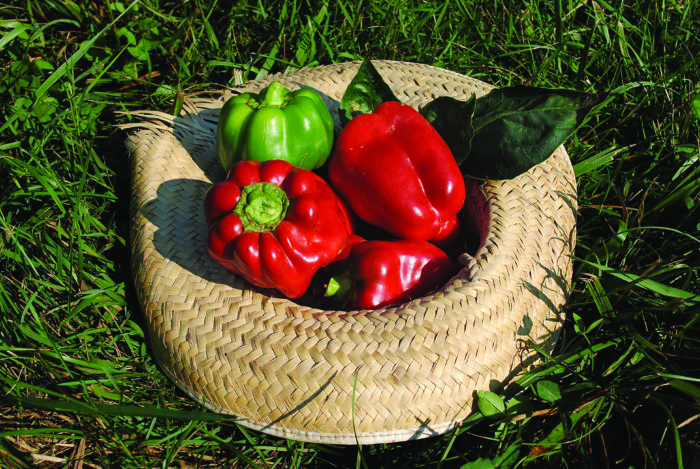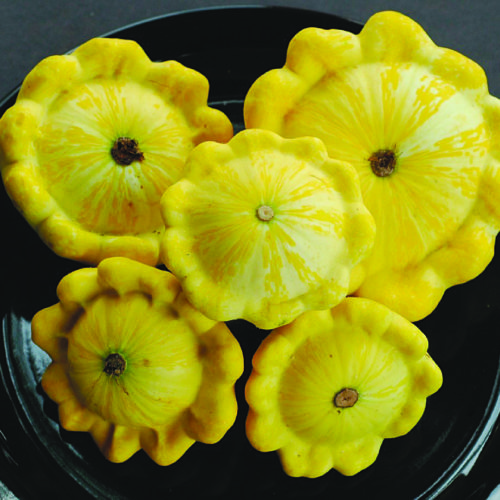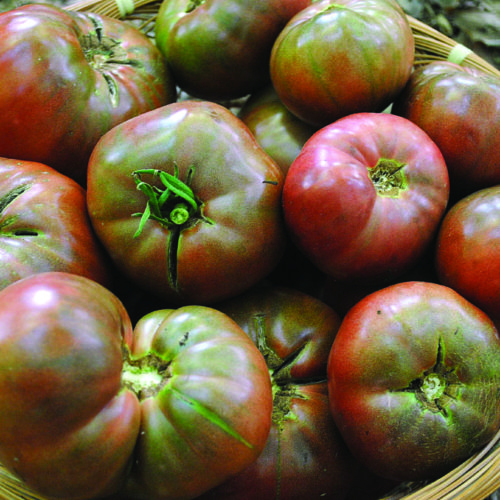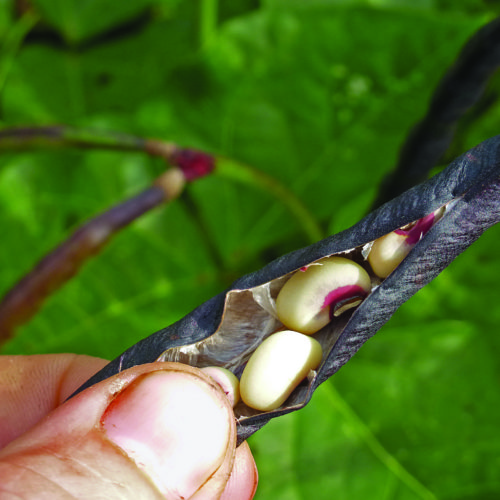‘Golden Bush’ patty pan squash
Days to maturity: 68
Not all summer squash are shaped like zucchini. One of the tastiest options is a patty pan—also called “cymlings” by Thomas Jefferson, who remarked on their fine quality. The fruits look like little flying saucers and may take their name from a French scalloped cake pan. ‘Golden Bush’ matures two weeks later than some other summer squashes but has a superior flavor. It is a hardy, relatively compact plant that takes up less of your valuable garden space than vining varieties and is perfect for growing in large containers.
‘Golden Bush’ bears prolifically across a long season and is downy mildew resistant. The fruit are golden yellow, plump, and tasty. The flavor is best when small (2 to 3 inches in diameter), but some cooks find larger ones (4 to 5 inches) more convenient.
|
‘Cherokee Purple’ tomato
Days to maturity: 85
‘Cherokee Purple’ tomato may well be one of the best-loved and most easily recognized heirloom varieties in the Southeast. Reportedly of Cherokee origin, this pre-1890 variety is somewhat exotic looking, ripening to a unique dark, dusky pink-purple color. Sometimes called a black tomato, ‘Cherokee Purple’ has a color that carries through to the flesh, especially at the stem end.
The flavor of the large 10- to 12-ounce fruit is rich, sweet, and complex with just a hint of acid. It’s always a favorite at tomato-tasting events. Back in 1993, Craig LeHouillier, author of Epic Tomatoes, introduced this popular variety to Southern Exposure Seed and to the rest of the seed world. The 5-foot-tall indeterminate plants are now a must-grow for many gardeners.
|
‘Pinkeye Purple Hull’ southern pea
Days to maturity: 65
In many areas of the South, ‘Pinkeye Purple Hull’ peas are a hometown favorite for their delicious flavor, early production, and disease resistance. The heavy set of purple pods is carried mostly above the foliage, making it easy to harvest. The twining, semibush plants benefit from some trellising. If the vines are kept well picked, they keep producing until frost kills them. The peas are equally good for canning, freezing, fresh eating, and drying. They’re perfect for cooking up a homegrown New Year’s good-luck meal, a Southern tradition.
|









Comments
Log in or create an account to post a comment.
Sign up Log in